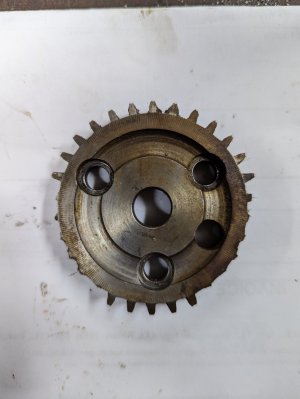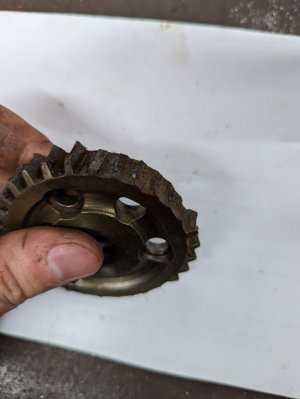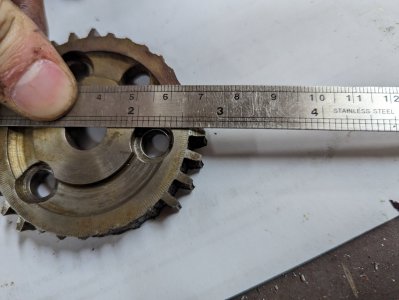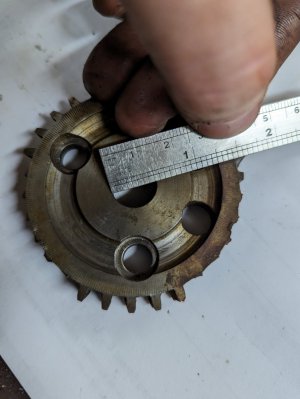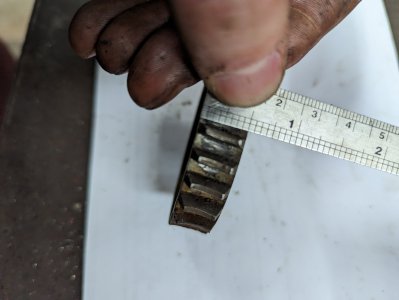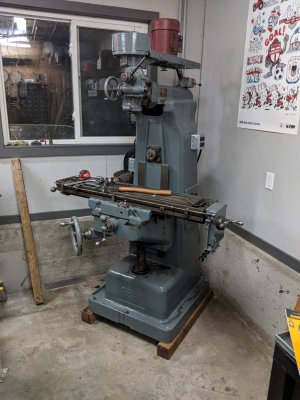- Joined
- Sep 25, 2021
- Messages
- 26
A while back I got a Fray Model 1-1/2 mill with a Type 4 head. After removing the head to give it a clean up I noticed that the worm gear that's used to adjust the angle has many teeth broken off. Obviously it's been broken a few times in the past, and the previous owner clocked it at a different spot so the teeth would still engage.
This still gives me close around 60 degrees of rotation with full tooth engagement, but I'm scared it might break off again and damage something more important.
Does anyone have any advice on a repair? I don't have any hobbing experience or equipment, but I do have a lathe and I'm reasonably good with a tig welder.
From what I can gather it's different from a Bridgeport gear.
This still gives me close around 60 degrees of rotation with full tooth engagement, but I'm scared it might break off again and damage something more important.
Does anyone have any advice on a repair? I don't have any hobbing experience or equipment, but I do have a lathe and I'm reasonably good with a tig welder.
From what I can gather it's different from a Bridgeport gear.


